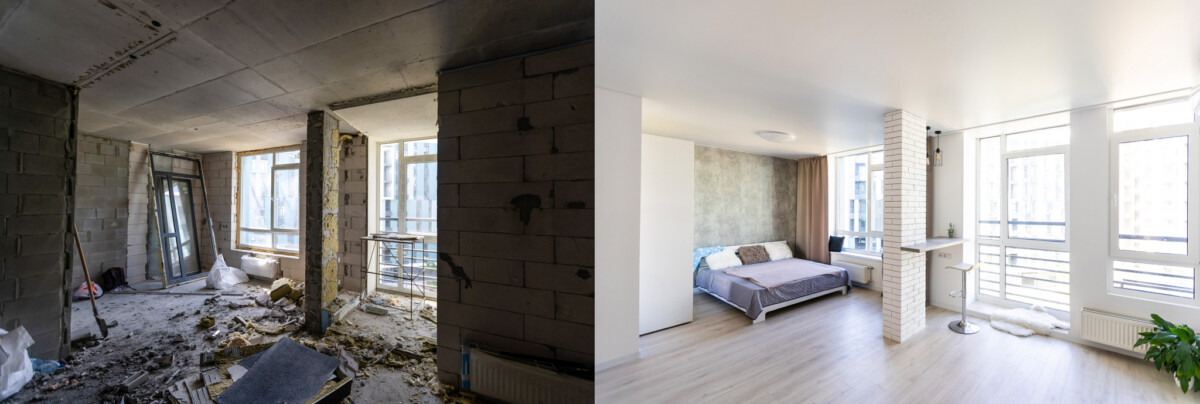Water damage is one of the most common and costly issues homeowners face. From minor leaks to significant flooding, the consequences of water intrusion can be devastating, leading to structural damage, mold growth, and expensive repairs. Fortunately, with proactive maintenance and awareness, you can significantly reduce the risk of water damage in your home or property. This article offers essential tips to help you prevent water damage before it starts.
1. Inspect and Maintain Your Roof
Your roof is the first line of defense against rain and snow. Damaged or aging roofs can quickly lead to water seepage.
Tips:
- Inspect your roof twice a year, ideally in the spring and fall.
- Look for missing, curled, or cracked shingles.
- Check flashing around chimneys, skylights, and vents.
- Clean out debris like leaves and branches that can trap moisture.
- Hire a professional for a full inspection every few years.
2. Keep Gutters and Downspouts Clean
Clogged gutters and downspouts can cause water to back up and spill over, damaging the roofline and foundation.
Tips:
- Clean gutters at least twice a year.
- Ensure downspouts extend at least 5 feet away from your home’s foundation.
- Consider installing gutter guards to prevent blockages.
- Regularly check for sagging or detached gutters and repair promptly.
3. Check for Plumbing Leaks
Minor plumbing leaks may seem insignificant, but they can cause substantial water damage and promote mold growth over time.
Tips:
- Regularly inspect faucets, under-sink pipes, and around toilets.
- Monitor your water bill for unexpected spikes, which may indicate hidden leaks.
- Install leak detectors under sinks, behind appliances, and near water heaters.
- Replace old hoses on washing machines and dishwashers with braided stainless steel options.
4. Protect Your Basement
Basements are highly susceptible to water damage, especially during heavy rains or snow melts.
Tips:
- Make sure basement walls and floors are properly sealed.
- Install a sump pump with battery backup to handle flooding.
- Ensure your property has proper grading so water drains away from the foundation.
- Use a dehumidifier to keep moisture levels under control.
5. Maintain Your Appliances
Household appliances that use water, like washing machines, dishwashers, refrigerators, and water heaters, are familiar sources of leaks.
Tips:
- Inspect appliances regularly for signs of wear or leaks.
- Follow manufacturer guidelines for maintenance.
- Place appliances on drip pans to catch minor leaks.
- Replace water heaters every 8-12 years or sooner if signs of corrosion appear.
6. Seal Windows and Doors
Gaps and cracks around windows and doors allow water to seep during storms.
Tips:
- Reseal caulking around windows and doors every few years.
- Install weather stripping to improve seals and energy efficiency.
- Use storm windows or shutters in hurricane-prone areas.
- Replace old or damaged window frames promptly.
7. Monitor Your Water Pressure
High water pressure can stress your pipes, increasing the risk of leaks and bursts.
Tips:
- Use a water pressure gauge to check your home’s pressure (normal range: 40-70 psi).
- Install a pressure regulator if your pressure exceeds safe levels.
- Have a plumber inspect your plumbing if you notice banging pipes or unusual noises.
8. Be Cautious with Landscaping
Improper landscaping can inadvertently direct water toward your foundation or underground pipes.
Tips:
- Avoid planting trees or large shrubs near water lines or your foundation.
- Grade your yard so that it slopes away from your home.
- Use mulch and landscaping fabric to control moisture levels and prevent erosion.
- Install French drains or swales if drainage is a recurring issue.
9. Know Your Home’s Shut-Off Valves
Knowing where to shut off the water quickly can minimize damage in case of a sudden leak or burst pipe.
Tips:
- Locate the main water shut-off valve and ensure it’s accessible.
- Label shut-off valves for sinks, toilets, and appliances.
- Teach everyone in your household how to turn off the water supply in an emergency.
10. Install a Water Leak Detection System
Modern leak detection systems can alert you to water issues before they become disasters.
Tips:
- Choose between passive (moisture-sensing alarms) or active (systems that shut off water automatically) leak detectors.
- Consider smart water monitors that integrate with your smartphone and track water usage in real time.
- Install in high-risk areas such as bathrooms, basements, kitchens, and laundry rooms.
11. Regularly Inspect the Attic
Attics are prone to unnoticed water damage due to their low visibility and proximity to the roof.
Tips:
- Look for signs of moisture, mold, or staining on insulation and wood beams.
- Ensure proper ventilation to prevent condensation buildup.
- Insulate your attic properly to prevent ice dams in winter, which can cause water backup under shingles.
12. Be Prepared for Winter
Freezing temperatures can cause pipes to burst and ice dams to form on roofs.
Tips:
- Insulate exposed pipes, especially in attics, crawl spaces, and garages.
- Let faucets drip during extreme cold to prevent freezing.
- Disconnect garden hoses and shut off outdoor faucets.
- Clear snow off roofs and gutters promptly after major storms.
Final Thoughts
Water damage is a serious issue that can lead to long-term problems if not addressed quickly. Fortunately, prevention is often straightforward and far less expensive than dealing with the aftermath of water damage. By adopting a proactive approach to maintenance and equipping your home with proper systems and safeguards, you can protect your property, finances, and peace of mind.
If you’re unsure about any specific risk areas in your home, don’t hesitate to consult a licensed home inspector or plumber. A little diligence now can save you from major headaches later.
Thank you for reading! If you enjoyed this article and want to explore more content on similar topics, check out our other blogs at Sonic Loans, Sonic Realty, and Sonic Title. We have a wealth of information designed to help you navigate the world of real estate and finance. Happy reading!
Are you looking for the right loan? Check out Sonic Loans for tailored mortgage solutions that make home financing simple and efficient.
Digital Property Management Solutions: The Future of Real Estate Efficiency
Virtual Reality in Property Marketing: The Future of Real Estate
PropTech Trends Shaping Real Estate
AI in Real Estate: Current Applications
Blockchain in Real Estate: Future Applications
Smart Home Features Worth Installing
Allen Park vs. Garden City: Where to Invest in 2025
Renting vs. Buying in Dearborn: Which Is Better?
What to Expect at the Closing Table in Home Closings

















